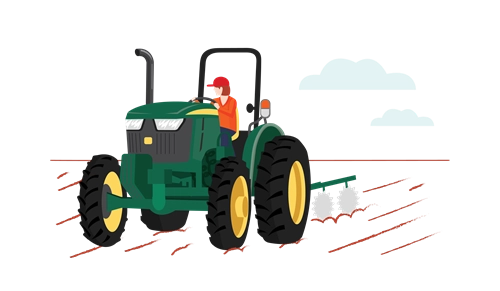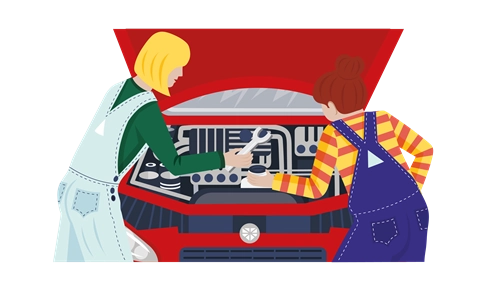-
Curriculum alignment
Design and technologies
AC9TDE6K05 – explain how characteristics and properties of materials, systems, components, tools and equipment affect their use when producing designed solutions.
AC9TDE6P01 – investigate needs or opportunities for designing, and the materials, components, tools, equipment and processes needed to create designed solutions.
AC9TDE6P02 – generate, iterate and communicate design ideas, decisions and processes using technical terms and graphical representation techniques, including using digital tools.
AC9TDE6P03 – select and use suitable materials, components, tools, equipment and techniques to safely make designed solutions.
AC9TDE6P05 – develop project plans that include consideration of resources to individually and collaboratively make designed solutions.
English
AC9E6LA07 – identify and explain how images, figures, tables, diagrams, maps and graphs contribute to meaning.
Visual Arts
AC9AVA6C01 – use visual conventions, visual arts proc
- S
- T
- E
- M
I am an inventor
Years 5 and 6
Learning hook
As a class, watch this clip of Jennifer George (Rube Goldberg's granddaughter) reading parts of her book Rube Goldberg’s Simple, Normal, Humdrum School Day, or read the book aloud to students.
Explain that the machines in the book are examples of Rube Goldberg machines. As a class, develop a definition for this type of machine.
Ask students if they can think of any films that feature Rube Goldberg machines. Examples may include Wallace & Gromit: The Curse of the Were-Rabbit, Chitty Chitty Bang Bang or Casper.
As a class, watch a few short videos of simple Rube Goldberg machines in action – examples are provided in the Resources section below. Students can also explore the setup of the Mousetrap boardgame.
Learning input
Read the book Just Like Rube Goldberg: The Incredible True Story of the Man Behind the Machines written by Sarah Aronson and illustrated by Robert Neubecker to students or watch/listen to it on YouTube here.
As a class, discuss:
- What was special about Rube as a child? Did he enjoy being an engineer? How did his love of drawing and engineering lead to his employment with the newspapers?
- Why is Rube Goldberg in the dictionary?
- What makes an inventor? Are there special characteristics an inventor needs?
- Rube Goldberg is considered an inventor. How has he contributed to society?
Ask students to think about a machine that has changed how we live our lives. Once they have identified one, ask them to find out who invented it, and when.
Just Like Rube Goldberg The Incredible True Story of the Man Behind the Machines.
Girls in focus
Students may find the inventors they research are typically men. Women are often underrepresented as inventors and IP Australia’s 2022 report shows that there is a significant gender gap, with female inventors comprising only 12% of patent holders (IP Australia: 2022). Watch this video to draw students’ attention to women who have invented life-changing technologies.
Watch the videoLearning construction
Support students to look closely at the simple machines used by Rube Goldberg: pulley, lever, inclined plane, screw, wedge, and wheel and axle. Explain that these simple machines help us complete a task more easily. With the students, try to identify each simple machine in one of the illustrations from the book.
Challenge students to look at their school or house and see how many simple machines they can see in action.
In the classroom, set up different challenges for the students to explore in small groups.
- Make a pulley to lift a bag of marbles onto a table.
- Use a lever to lift objects; adjust the position of the fulcrum and observe the impact.
- Create a ramp (inclined plane) to pull up an object and use a spring scale to measure the force required. Try different angles and observe which angle uses less force.
- Slide a box across the floor. Then place the box on a toy car, which includes wheels and axles. Which moves most easily?
- Experiment with an Archimedes screw. (Watch this video on making an Archimedes screw to make one for students). Does the angle of the screw matter? How can screws help us lift things?
- Use differently shaped blocks (for example, cylinder, rectangular prism, triangular prism (wedge) to split a lump of playdough. Observe which block is most effective. Can students explain why?
How to Make an Archimedes Screw
Girls in focus
Hands-on activities are important for engaging and motivating students in STEM, however not all students will be confident in taking a hands-on role in a group exploration. Consider having a different student in the group take the hands-on lead for each activity while the other students make suggestions, ask questions and record observations.
After completing all the activities, ask students to reflect and describe how each simple machine makes work easier. Share ideas as a class and identify the role each simple machine could play in a Rube Goldberg machine. An example is provided below.
| Simple machine | Role in a Rube Goldberg machine |
|---|---|
|
Wedge |
Makes it easier to force things apart. |
|
Wheel and axle |
Reduces friction and makes movement easier. |
|
Lever |
Moves around a fulcrum to make it easier to move things. |
|
Inclined plane |
Makes it easier to raise objects by moving up a slope. |
|
Screw |
Makes it easier to lift things up an inclined plane. |
|
Pulley |
Changes the direction of a force. |
Challenge students to work in small groups to design their own Rube Goldberg machine. They will need to sketch their idea and then build it and demonstrate it for the class.
Rube Goldberg machines are complex! To make the task manageable, follow these steps.
- Allocate each group of students a goal, such as dropping a ball into a cup, popping a balloon or pouring water into a container.
- Provide a set size for the machine, such as the surface of one or two desks.
- Use a cardboard base to build on, so the projects can be moved around.
- Show students the materials you will provide and explain that if they need other materials they will have to source them themselves.
- Ask students to plan their project before they start to build, starting with the very last step and working backwards.
- Ask students to bring their final sketches for approval before they start building to ensure they have an actionable plan.
Once students have built their machines, they can film it in action, then annotate the film or provide a voiceover to identify the simple machines they’ve used.
Girls in focus
Some girls may be hesitant to engage in open-ended construction activities. Providing an opportunity to think through each stage and annotate their diagrams before they begin tinkering can build their confidence. Students may also benefit from explicit modelling of construction techniques, such as methods for attaching components.
Further learning
Students can further explore Rube Goldberg’s work as a cartoonist.
Ask students, what is a cartoon? Explain that people of all ages and backgrounds often enjoy some form of cartoons. As a group, identify different types of cartoons and discuss the skills cartoonists need.
As a class, look closely at some Rube Goldberg cartoons. Have students consider how these are different to other cartoons and draw attention to the labelling in Rube Goldberg’s cartoons.
Now have students create their own cartoon of a Rube Goldberg machine. They should think of a simple task to complete, and then, working backwards, create simple chain reactions to make an interesting, zany and fun way to complete the first simple action. Explain that they are not limited by materials or space, only their imaginations!
They should label their cartoon so the processes in their Rube Goldberg machine are clear. They can also label the simple machines they’ve used.
Showcase students’ cartoons in the classroom or virtually. For videos to support students’ cartooning, see the Resources section below.
Girls in focus
Cartoons are a great way to communicate with diverse audiences. Students may not realise that many women balance STEM careers with creative pursuits. Show students the work of Kelly Montgomery, who creates graphic novels about women in STEM, and is studying neurodegeneration at the University of California.
-
Rubric
Assessment
Criteria
Beginning
Achieved
Exceeded
Research the life and work of Rube Goldberg
Briefly outlined Rube Goldberg’s Life and achievements.
Gathered a variety of information about the life and work of Rube Goldberg.
Gathered extensive information about Rube Goldberg’s work, life, and contributions globally. Included diagrams, history, and examples.
Summarise six simple machines
Attempted to describe the physics of the machines.
Described the physics of the machines in general terms.
Described the physics of the machines in specific and concise terms.
Explain the work and task of cartoons and cartoonists
Had difficulty identifying cartoons and cartoonists messages.
Able to identify a cartoon's message and understand the work of cartoons and cartoonists.
Clearly and succinctly identified the work of a cartoon and cartoonist.
Design and draw a simple machine to complete a simple task.
Design implemented fewer than two simple machines.
Design used three or four types of simple machines with some repeats.
Design implemented more than five simple machines that were not repeated.
Structural integrity
Machine was not stable and did not demonstrate simple machine principles.
Machine had some instability in a few areas and demonstrated most simple machine principles.
Machine was built strongly and demonstrated most of the simple machine principles.
Evaluate your Rube Goldberg machine
Able to explain how the simple machines worked together to accomplish a specific task.
Able to give detailed explanation of how the simple machines worked together to accomplish a specific task.
Able to use scientific and every-day language to explain how the simple machines work together to accomplish a specific task.
Creativity, problem-solving and collaboration
Demonstrated some creativity, problem-solving and collaboration throughout task.
Demonstrated good creativity, problem-solving and collaboration throughout task.
Demonstrated excellent creativity, problem-solving and collaboration throughout task.
Resources
- RSD Alert Connections: Rube Goldberg: A complex machine to perform a simple task
- Top 10 Rube Goldberg Machines in Movies
- Rube Goldberg easy examples
- The Rube Goldberg Institute for Innovation and Creativity: Cartoon gallery
- The Science Academy STEM Magnet: Rube Goldberg Machines Compilation
- How to Draw a Cartoon – for Beginners
- 10 Great Inventions by Women
- JKX Comics
- Just Like Rube Goldberg: The Incredible True Story of the Man Behind the Machines
- GoldieBlox & Rube Goldberg ‘Princess Machine’
- Rube Goldberg Turning on a fan Ok Go – This Too Shall Pass – Rube Goldberg Machine
- Smithsonian Magazine: The Story Behind Rube Goldberg’s Complicated Contraptions
- Scootle: Cartoons
- Learn to Draw Cartoons with Christopher Hart
- 500 Women Scientists: Diversifying Science Through Comics










